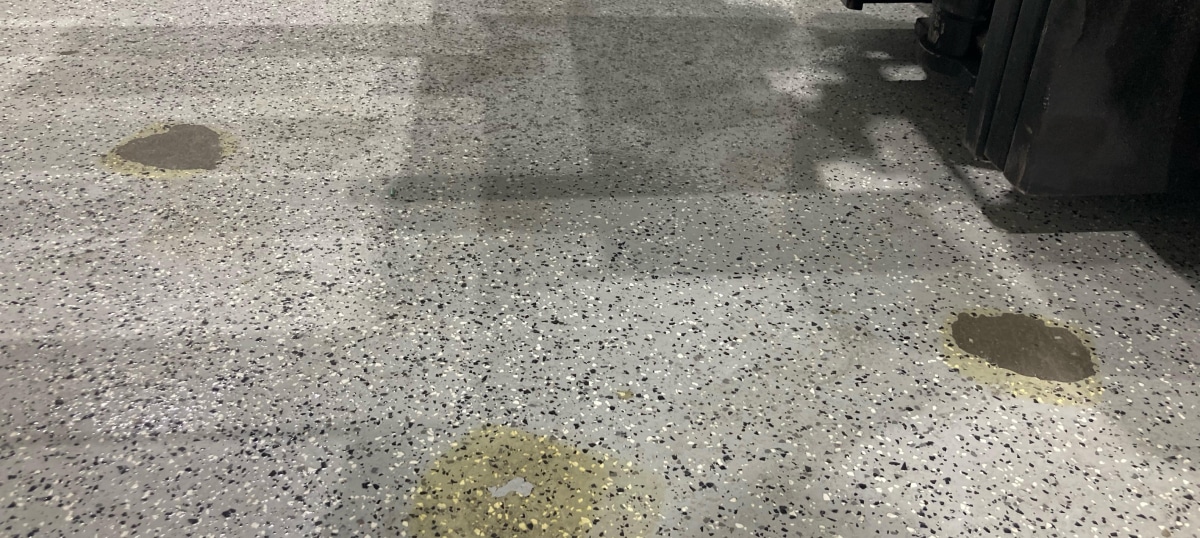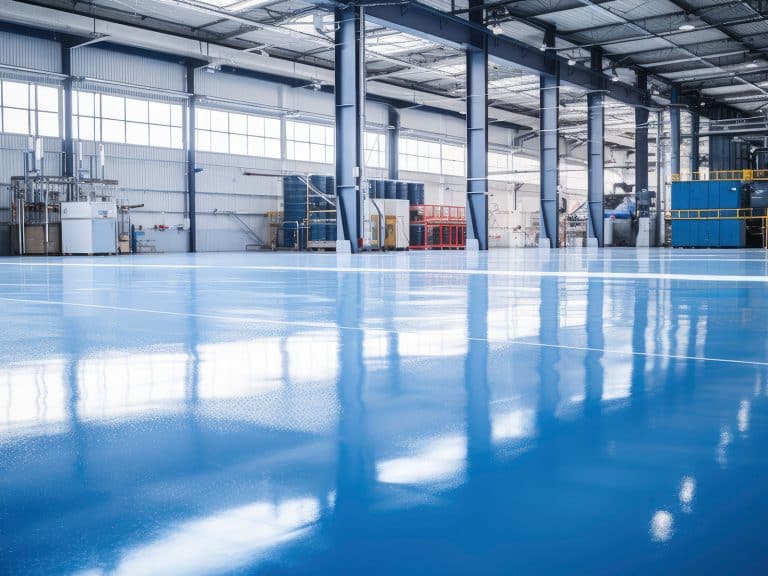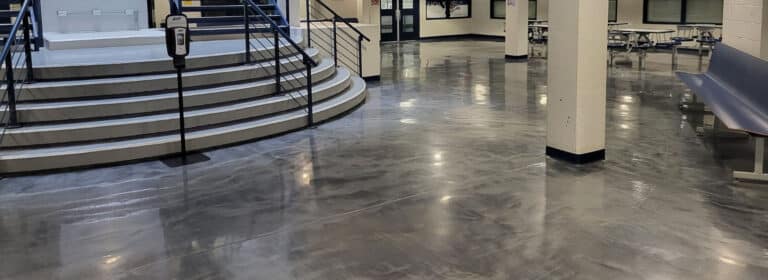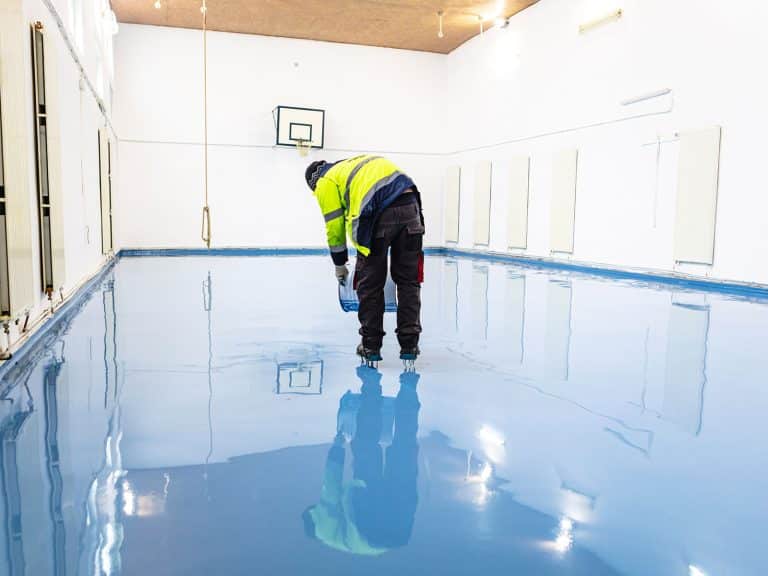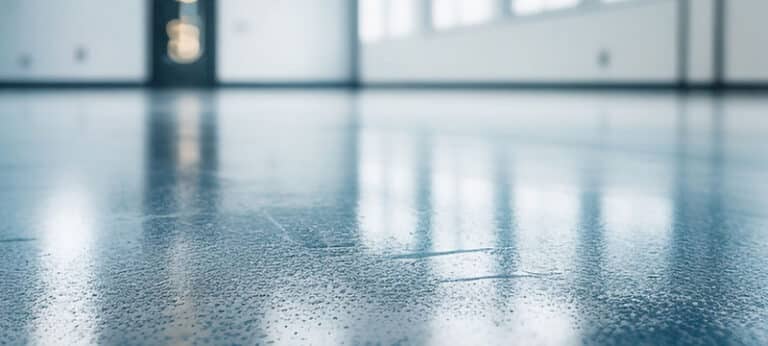10 Common (and Frustrating) Epoxy Flooring Problems and How to Fix Them
Ever wondered why your epoxy flooring isn’t living up to the hype? Frustrated by cracks, fading or peeling? Wish you could get that “brand new” vibe back?
While epoxy floors are durable, sleek, and incredibly popular, they can also come with their fair share of problems.
Whether it’s bubbling, peeling, or unexpected discolouration, these issues can be frustrating and often leave people scratching their heads.
In this article, we’ll dive into the top 10 most common epoxy flooring problems and, more importantly, how to fix them. From improper surface prep to moisture issues and even poor application techniques, we’ll cover everything you need to know to keep your floors in top shape.
Choosing the right solution is crucial, as it can mean the difference between a long-lasting, beautiful floor and one that constantly needs repairs.
So, whether you’re a homeowner looking for DIY solutions or a professional wanting to refine your skills, these expert tips will save you time, money, and headaches.
PM INDUSTRIES TIPS:
|
10 Common Epoxy Flooring Problems (and Their Solutions)
Epoxy flooring has a reputation for being durable and visually appealing, but like any material, it’s not immune to problems. Let’s take a closer look at the top 10 epoxy flooring problems, their causes, and, most importantly, how to fix or prevent them.
Understanding these problems can help you keep your epoxy floors in great condition for years to come.
#1 – Bubbling and Blistering
Bubbles or blisters can appear on epoxy floors when air gets trapped beneath the surface. This often happens due to poor surface preparation, excessive moisture, or applying the epoxy in conditions that are too humid or too hot.
To resolve this, it’s essential to first identify the root cause. If moisture is the issue, ensure the surface is dry before application, and use a moisture barrier if necessary.
For heat-related problems, it’s best to apply the epoxy in cooler temperatures or use slow-curing products that allow bubbles to rise to the surface and pop.
Fix to enjoy:
- Smoother, more attractive finish
- Prevents future peeling and cracking
- Enhances overall durability
#2 – Peeling Epoxy Floors
Peeling is a common issue, especially if the epoxy isn’t bonding correctly to the surface underneath.
This often happens due to insufficient cleaning, a lack of surface roughness, or applying the epoxy over a previously coated surface without proper sanding.
To prevent peeling, ensure the surface is thoroughly cleaned and degreased before application. It’s also vital to roughen the surface slightly by grinding or etching it so that the epoxy can properly bond.
For previously coated floors, sanding the old surface to create adhesion is crucial.
Fix to enjoy:
- Long-lasting adhesion
- Reduced maintenance and repair costs
- A more professional-looking finish
#3 – Discolouration
Epoxy floors can lose their initial vibrancy and discolour over time due to UV exposure or chemical reactions. This is particularly common in areas with a lot of sunlight or in spaces where strong chemicals are frequently used.
To avoid discolouration, consider using UV-stable topcoats or UV-resistant epoxy formulas. Also, minimise the use of harsh chemicals on the floor, and if possible, apply the epoxy in areas where direct sunlight is limited.
Fix to enjoy:
- Aesthetic appeal is retained
- Longer-lasting surface
- UV protection prevents premature wear
#4 – Fish Eyes
“Fish eyes” are small craters or divots that appear in the epoxy surface. They occur when oil, grease, or other contaminants are present on the surface before application.
Even tiny amounts of these substances can disrupt the epoxy’s ability to bond smoothly.
To prevent fish eyes, always ensure that the surface is impeccably clean and free from any contamination. Use solvents or degreasers specifically designed for surface prep, and make sure the floor is completely dry before applying the epoxy.
Fix to enjoy:
- Flawless, smooth surface
- Improved overall performance of the epoxy
- Avoids future cracking around craters
#5 – Humidity Issues
Excess humidity during the epoxy application process can lead to moisture bubbles or haziness in the final product. If moisture gets trapped under the epoxy, it can also weaken the bond between the epoxy and the floor.
To manage moisture, it’s essential to apply the epoxy in a controlled environment with low humidity levels. Using a dehumidifier or waiting for a drier day can help.
For surfaces that tend to absorb moisture, applying a moisture barrier prior to the epoxy coat can solve the problem.
Fix to enjoy:
- Clear, smooth finish
- Strong bond between epoxy and surface
- Reduced risk of moisture-related damage over time
#6 – Surface Cracking
Epoxy is durable, but if the surface it’s applied to is weak or cracked, the epoxy will eventually show cracks too. This is especially true when epoxy is applied over a subfloor that shifts or moves due to temperature changes or pressure.
To prevent cracking, it’s important to inspect the subfloor before applying the epoxy. Any existing cracks should be repaired, and the subfloor should be stable and free from major imperfections.
In cases of significant movement, an expansion joint may be necessary.
Fix to enjoy:
- Increased longevity of the epoxy floor
- A seamless, professional appearance
- Prevents further damage from spreading
#7 – Improper Curing
Rushing the curing process can lead to a weak epoxy floor that’s more susceptible to damage. Improper curing typically occurs when the epoxy is exposed to extreme temperatures or moisture too soon after application.
To ensure proper curing, it’s crucial to follow the manufacturer’s guidelines for temperature and drying times. Keep the area well-ventilated, and avoid stepping on the surface or placing heavy objects until the epoxy has fully cured.
Fix to enjoy:
- Maximises the strength and durability of the floor
- Reduces the likelihood of surface imperfections
- Ensures a professional-grade finish
#8 – Outgassing
Outgassing occurs when air or gases escape from the substrate (such as concrete) during the epoxy curing process, causing bubbles or voids in the surface.
This typically happens if the epoxy is applied too soon after preparing the concrete or if the surface temperature is too warm.
To avoid outgassing, ensure the concrete has fully cured before applying the epoxy. It’s also a good idea to apply a primer or sealer first, which will block any air from escaping during the epoxy application.
Fix to enjoy:
- Prevents bubbles and voids in the surface
- Enhances the overall strength of the epoxy
- Results in a smoother, more consistent finish
#9 – Slippery Surface
Epoxy floors can become quite slippery, especially when wet. This can be a serious safety hazard in both residential and commercial spaces.
To increase traction, consider adding an anti-slip additive to the epoxy mix. These additives are often made from fine aggregate materials like sand or aluminium oxide and can be sprinkled onto the surface while the epoxy is still wet.
Fix to enjoy:
- Improved safety, especially in high-traffic areas
- Customisable levels of slip resistance
- Enhanced functionality without compromising aesthetics
#10 – Chipping and Scratching
Although epoxy is highly durable, heavy foot traffic, sharp objects, or dragging furniture can cause chipping and scratches over time.
This not only affects the appearance of the floor but can also expose the surface beneath, leading to further damage.
To protect the epoxy, use rugs or mats in high-traffic areas and avoid dragging heavy objects across the floor. Regularly applying a polyurethane topcoat can also provide an additional layer of protection.
Fix to enjoy:
- Extends the life of the epoxy floor
- Maintains the floor’s polished appearance
- Reduces the need for costly repairs
Key Factors to Consider When Choosing Epoxy Flooring Solutions
Surface Condition and Preparation
If the floor has cracks, holes, or is uneven, it’s important to address these issues before applying epoxy.
Uneven or damaged surfaces often need additional prep work like grinding, patching, or even the application of a primer before the epoxy coat can go on smoothly.
Skipping this step can result in problems like peeling, bubbling, or cracking later on.
Additionally, the surface type itself—whether it’s concrete, wood, or another material—affects the type of epoxy you should choose.
Some surfaces may require special epoxy formulations or primers to ensure a strong bond and prevent future issues. Proper surface preparation is essential not only for durability but also to achieve a professional finish that lasts.
Intended Use and Foot Traffic
For high-traffic areas like commercial spaces, industrial warehouses, or garages, you’ll need a heavy-duty epoxy with added protective layers, such as a polyurethane topcoat, to handle the wear and tear.
Areas with lighter traffic, such as home basements or laundry rooms, can often get by with a standard epoxy coating without the need for extra reinforcement.
Another consideration is whether the space is exposed to sharp objects, chemicals, or heavy machinery.
These factors may require the addition of anti-slip additives or chemical-resistant topcoats to ensure the epoxy can stand up to daily abuse without chipping or scratching easily.
The more demanding the environment, the more robust your epoxy solution should be.
Moisture and Humidity Levels
High levels of humidity during application can lead to bubbling or improper curing, while moisture rising from the substrate (like concrete) can cause outgassing or peeling.
Before selecting an epoxy solution, it’s crucial to test for moisture in the subfloor. If your space has a high moisture content, consider using a moisture barrier primer before applying the epoxy.
For areas like basements or bathrooms, where humidity is often higher, choosing an epoxy with moisture-resistant properties is key.
Some epoxy products are specifically formulated to be more resilient against moisture, making them ideal for areas prone to dampness. The more proactive you are about managing moisture, the better your epoxy floor will perform.
Temperature and Climate Conditions
Epoxy tends to cure best in moderate temperatures, usually between 15°C and 30°C, so it’s important to apply it during suitable weather conditions.
If you live in a region with extreme heat or cold, you may need to choose an epoxy product specifically designed for those conditions.
In colder climates, curing can take significantly longer, or the epoxy may not cure properly at all. Conversely, in hot climates, epoxy may harden too quickly, leading to improper application.
Some epoxy systems come with temperature-resistant additives or slow-curing agents that allow you to control the curing process based on your environment. Always consider local climate conditions when choosing your flooring solution.
Aesthetic Preferences and Customisation Options
Epoxy is not just about function—it’s also about style. Modern epoxy coatings come in a variety of colours, textures, and finishes, allowing you to customise your floor to suit the design of your space.
Whether you prefer a sleek, high-gloss finish or a more textured, matte look, there’s an epoxy product that can deliver your desired aesthetic.
Additionally, epoxy floors can be enhanced with decorative flakes, metallic pigments, or even 3D designs to create a unique, eye-catching floor.
However, it’s important to remember that these customisations can also affect the durability and maintenance requirements of your floor. When considering customisation options, balance aesthetics with the practical needs of the space.
Budget and Long-Term Costs
While epoxy is generally considered cost-effective, your budget will still play a role in determining which solution is right for you.
The cost of epoxy varies based on the type, quality, and additional features like anti-slip additives or decorative finishes.
Standard epoxy solutions are typically more affordable, but higher-end options with added durability or custom designs can raise the price.
It’s also important to factor in long-term costs, such as maintenance, repairs, and how often the floor may need to be recoated.
Investing in a high-quality epoxy solution upfront can save you money in the long run by reducing the need for frequent repairs or replacement. Always weigh the initial cost against the lifespan and durability of the epoxy you’re considering.
Safety and Slip Resistance
Safety should never be overlooked, especially in areas prone to spills or high foot traffic.
Epoxy floors can become slippery when wet, making it essential to choose a product with anti-slip additives if you’re applying it in areas like kitchens, bathrooms, or entryways.
Some epoxy coatings come pre-mixed with slip-resistant particles, while others allow you to sprinkle additives on the surface during application.
The level of slip resistance can be customised based on your needs, so consider the specific use of the space.
For instance, in an industrial setting, a higher level of slip resistance may be necessary, while in a residential setting, you might opt for something less aggressive but still safe. Keep safety in mind as a key factor when choosing your epoxy solution.
Trust the Experts at PM Industries for Your Epoxy Flooring Needs
When it comes to epoxy flooring, getting the job done right the first time can save you from future headaches and costly repairs.
At PM Industries, we pride ourselves on being the industry leader in epoxy flooring solutions, backed by years of expertise and a proven track record of excellence.
Our team is dedicated to helping you avoid common pitfalls and ensuring that your floor is not only durable but also visually stunning.
Whether you’re dealing with a current flooring issue or starting a new project, we’re here to provide personalised advice and solutions tailored to your specific needs.
Ready to transform your floors? Contact us today on 0436 837 699 or claim your fast and FREE quote online.

